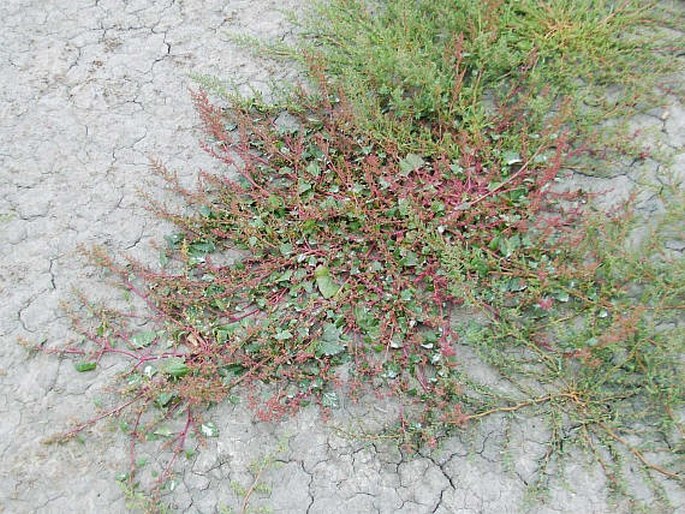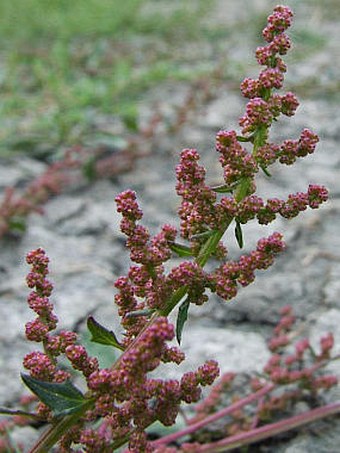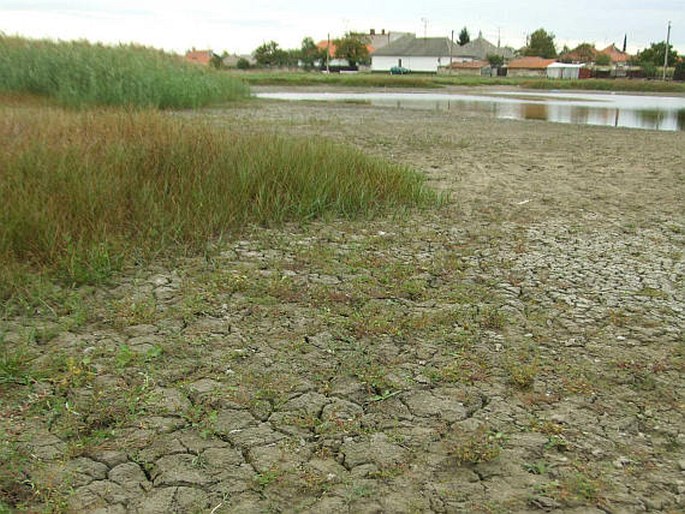Syn.: Blitum chenopodioides L., Chenopodium botryodes Smith, Chenopodium chenopodioides var. degenianum (Aellen) Aellen, Chenopodium crassifolium Hornemann
Family: Chenopodiaceae Went.


Distribution: Native probably in Central and Southwestern Asia and Europe; introduced to North Africa, South and North America.
Ecology: Coastal and inland salt-marshes, lake bottoms, rarely in fields.
Description: An annual herb, 15–50 cm tall. Stem erect, much branched, green striate. Leaf blade green abaxially, dark green adaxially, broadly triangular, 3–4 cm long, slightly succulent. Glomerules arranged in spikelike panicles on branches; central flowers of glomerules bisexual, lateral ones female. Female flowers with obconic, 2–4-lobed and succulent perianth, lobes cochleariform, unequal, abaxially keeled. Bisexual flowers with perianth depressed and hemispheric, 4- or 5-parted. Achene yellow-brown, depressed ovoid, 0.5–0.75 mm in diameter.
Endangering and Protection: The species is listed as endangered species in some countries of Central Europe (Austria, Czechia, Germany, Slovakia).
Note: Very similar is Chenopodium rubrum, but it is confined to non-saline habitats, leaves are not succulent, and perianth is not keeled abaxially.


Photos: Pavol Eliáš jun., September 2007 (Slovakia, Tvrdošovce) and September 2006 (Hungary, Mikla-puszta).


